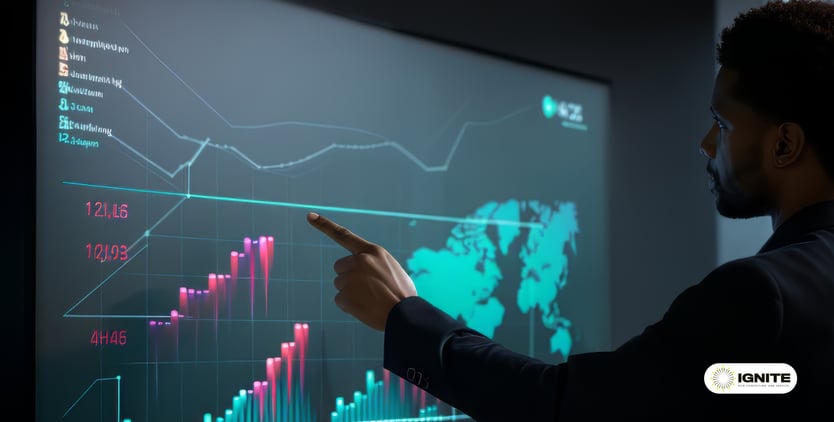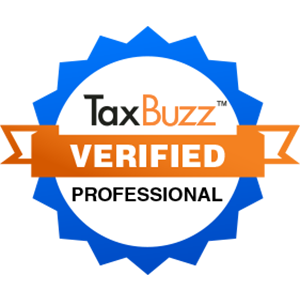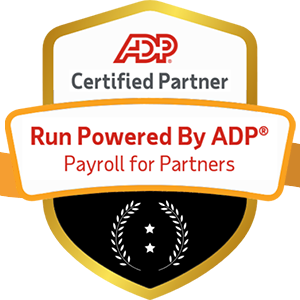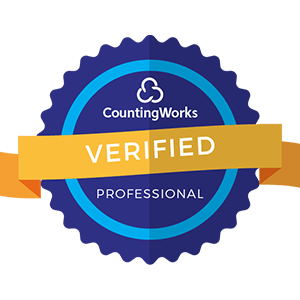The employee experience is a hot topic in human resources today. With unemployment rates at record lows, companies are competing fiercely for talent. To attract and retain top performers, organizations must focus on enhancing the entire employee experience – not just competitive pay and benefits.
What exactly is the employee experience? It encompasses every interaction an employee has with your company, from the initial job search and application process to their last day on the job. It shapes an employee’s perspective of your organization and impacts engagement, productivity, and longevity.
In this comprehensive blog, we’ll explore what comprises the employee experience, why it matters, and provide actionable strategies to improve it at your organization.
What is the Employee Experience?
The employee experience encompasses every aspect of an employee’s journey with your company. According to Jacob Morgan, author of The Employee Experience Advantage, it consists of three environments:
Physical Environment
This includes the office design, layout, temperature, lighting, amenities, and location. Studies show that workplace design significantly impacts collaboration, focus, and job satisfaction.
Key elements of the physical environment include:
- Office layout – Open floor plans improve collaboration, while private offices enable focused work. Offering both optimizes productivity.
- Ergonomics – Ergonomic furniture reduces strain and injuries from desk chairs to monitor heights.
- Natural light – Access to windows and daylight boosts well-being and energy levels.
- Break areas – Informal coffee, chat, or unwinding spaces foster social connections.
- Sustainability – Greener buildings with recycled materials and energy efficiency are better for people and the planet.
- Commute and parking – Easy access via public transit or free parking eases the daily commute.
- Maintenance – Promptly fixing issues like equipment malfunctions demonstrates your care.
Enhancing these elements creates a motivating, inspiring work environment.
Technological Environment
The hardware and software employees interact with daily, including laptops, phones, collaboration tools, and HR platforms. These must be seamlessly integrated and enable efficiency.
Critical aspects of the tech environment consist of:
- Device quality – The latest high-performance laptops, tablets, and phones make work easier.
- Software relevance – Adopt innovative new software that solves user pain points. Don’t force outdated tools.
- Tech support – It is essential to have ample IT resources to troubleshoot tech issues quickly.
- System integration – Ensure programs share data to minimize frustrating re-entry and toggling between apps.
- Digital dexterity – Beyond core software, provide access to specialized tools for each role.
- Data security – Robust cybersecurity protocols give employees peace of mind around privacy and data protection.
An empowering, glitch-free tech environment demonstrates you're investing in employee efficiency and success today.
Cultural Environment
This encompasses leadership style, organizational values, policies, incentives, and workplace rituals that shape company culture. A positive, engaging culture is a crucial driver of employee satisfaction.
Elements shaping culture consist of:
- Leadership accessibility – Are executives approachable and committed to hearing employee perspectives?
- Diversity and inclusion – Do all employees feel welcomed, valued, and able to advance?
- Work-life balance – Does the company actively support employees in pursuing interests outside work?
- Collaboration – Is teamwork encouraged over competition? Are strengths leveraged across teams?
- Performance management – Does the system focus on continuous skills growth and development?
- Mission and values – Are the company purpose and cultural values clear, lived, and widely embraced?
- Recognition and rewards – Are achievements acknowledged and celebrated consistently?
Getting culture right begins with listening – regularly soliciting input to ensure the environment enables all employees to thrive.
These environments influence employees’ perceptions, emotions, and attitudes toward your organization.
Why the Employee Experience Matters

A Forbes Insights study found that companies with highly engaged employees have:
- 17% higher productivity: Employees who feel connected to the company mission and supported in their roles give their best effort.
- 70% lower employee turnover: Happy employees are less likely to leave for another opportunity. According to Gallup, replacing them is costly – estimated to cost 33% of their annual salary.
- 21% higher profitability: Engaged employees deliver better business outcomes, leading
to more robust financial performance.
Additionally, the employee experience powerfully impacts your employer's brand. Glassdoor reports that 80% of job seekers consider a company's reputation and culture before applying. With review sites like Glassdoor and Indeed, insider perspectives on your employee experience reach candidates globally.
In today's transparent digital age, the employee experience must be a top priority for attracting talent and fueling growth. As Richard Branson said:
“Clients do not come first. Employees come first. They will care for the clients if you care for your employees.”
Next, let’s explore key strategies to enhance the employee experience at your organization.
8 Ways to Improve the Employee Experience

Here are eight impactful ways to elevate your employee experience:
1. Define Your Employer's Value Proposition
Your employer value proposition (EVP) clarifies what makes your company a great workplace. It encompasses your mission, values, culture, and employee offerings.
Start by surveying current employees on what they appreciate most. Identify the unique advantages you provide versus competitors. Then, craft a compelling, authentic EVP that resonates internally and can be communicated externally.
Be specific on elements of your culture, such as:
- Flexible work arrangements
- Cross-functional collaboration
- Internal mobility opportunities
- Commitment to diversity and inclusion
- Workplace wellness and sustainability
Highlight your EVP prominently on your careers site and employee communications. Give concrete examples of how your culture and values come to life. This attracts candidates who thrive in your environment and helps engage new hires.
2. Rethink Your Office Space
As remote and hybrid work models become the norm, office space must be reimagined to meet new needs.
Consider these best practices:
- Create multifunctional spaces – Design open, collaborative areas for teamwork and private rooms for focused work. Allow employees to pick a suitable space for their tasks.
- Support hybrid teams – Facilitate seamless video meetings with large screens, high quality audio, and room layouts optimized for remote participants.
- Add recreation areas – Designate areas for relaxation, games, or eating meals together. Human connection fuels engagement.
- Be flexible – Allow employees to select if/when they utilize the office based on team schedules and personal needs. Choice and control improve the experience.
- Gather input – Conduct focus groups and surveys to understand better how your current office aids or impedes collaboration and productivity.
Providing an inspiring yet flexible office environment demonstrates you're invested in employee success and wellbeing.
3. Continuously Improve Technology
Today's employees expect consumer-grade, user-friendly technology that enables productivity. Yet Gallup finds only 3 in 10 employees strongly agree they have the technology to do their job efficiently.
Make technology optimization an ongoing focus by:
- Holding periodic tech reviews to identify pain points and improvement opportunities.
- Proactively testing new software, collaboration tools, and devices. Adopt innovations that simplify work.
- Offering sufficient training and support to get employees up to speed on new tech.
- Recognizing teams or individuals who identify tech enhancements that boost performance.
- Assigning technology liaisons within each department to gather user feedback.
- Budgeting annually for technology upgrades to replace aging tools.
Keeping technology up-to-date demonstrates you're investing in employee success today and tomorrow.
4. Build a Strong Onboarding Experience
A positive new hire onboarding experience boosts employee engagement, productivity, and retention. However, many programs fail to do so.
To ensure yours hits the mark, consider these tips:
- Start onboarding early by sending welcome kits with company swag after acceptance. Maintain contact up until day one.
- Create an onboarding roadmap that outlines activities, technology setup, meetings, training, and checkpoints for their first 90 days.
- Assign peer buddies to answer questions, provide tours, and introduce new hires socially.
- Schedule 30/60/90-day check-ins with managers to provide feedback, additional training, and support.
- Collect new hire input at 30 and 90 days to improve the experience for the next cohort.
- Automate elements like distributing equipment and system access to accelerate readiness.
- Make training engaging with multimedia content, blending video, messaging, and gamification.
A structured onboarding program with milestone check-ins accelerates new employee productivity and connection to your company mission.
5. Prioritize Learning & Development
Employees today, especially Millennials, expect ample learning opportunities from employers. Internal mobility is also linked to higher engagement and retention.
Expand your learning and development offerings through:
- Mentorship programs that pair junior and senior employees for guidance and growth.
- Lunch & Learn sessions where team members share skills informally.
- Tuition reimbursement and career development funds to support external learning.
- Job shadowing and stretch assignments to build cross-functional skills.
- An internal job board that allows employees to express interest in open roles across departments.
- Microlearning through online courses, videos, and podcasts that provide bite-sized learning on demand.
- Skills assessments to identify individual strengths and development opportunities to support career pathing.
Broad development opportunities demonstrate your commitment to helping employees continuously upskill and progress in their careers.
6. Recognize and Reward
Recognizing achievements and milestones gives employees a sense of purpose and appreciation. Yet Gallup finds only one in three workers strongly agree they received recognition or praise in the last week.
To build a culture of recognition:
- Highlight peer-to-peer recognition through tools like Slack and Workplace by Facebook. Enable anyone to call out great work.
- Automate milestone awards like work anniversaries and completed training programs.
- Share wins publicly in all-hands meetings, digital signage, and internal social networks.
- Empower managers to reward top performers through compensation, development opportunities, and perks like team lunches.
- Gamify recognition with points earned for behaviors that support your values. Allow employees to redeem points for rewards.
- Tie to company values by highlighting how excellence and collaboration reinforce the culture you aim to build.
Recognition should happen continually across the employee lifecycle. Make it easy for anyone to acknowledge great work.
7. Gather Employee Feedback
Soliciting ongoing employee feedback is crucial. The Workforce Institute's report on closing the engagement gap finds that when companies frequently act on feedback, 83% of employees feel valued – compared to just 15% at firms that never take action.
Collect input through:
- Pulse surveys on work environment, leadership, or recent initiatives. Keep them brief with a few open-ended questions.
- Focus groups to get candid perspectives on issues uncovered in surveys.
- Online suggestion boxes where employees can anonymously share ideas for improvement.
- Annual engagement surveys to gauge overall satisfaction and progress on enhancing the employee experience.
- Stay interviews that proactively uncover why employees choose to stay and what would further increase their commitment.
- Exit interviews to learn why employees leave and where experience falls short.
Then, demonstrate you are listening by summarizing findings and sharing action plans. Change driven by employee input powerfully impacts engagement.
8. Measure What Matters
Finally, leverage data to guide your employee experience strategy. Key metrics to track include:
- Retention and turnover – Are enhancement efforts leading to longer employee tenure?
- Absenteeism – Are people missing work less often due to greater engagement and satisfaction?
- Internal mobility – Does the organization enable employees to flexibly move across teams and roles?
- Learning hours – Are employees spending more time on professional development?
- Social connection – Are colleagues building stronger bonds as measured by collaboration tool use or meetings per person?
- Recognition activity – Are peer-to-peer and manager recognitions increasing?
- Wellness utilization – Are offerings like employee assistance programs, meditation breaks, or fitness classes being used more?
Analyze trends over time and versus industry benchmarks. For areas needing improvement, drill down to understand causes and explore solutions. Surfacing the metrics that matter ensures you make data-driven decisions on strengthening the employee experience.
The Role of HR in Improving Experience

While optimizing the employee experience requires company-wide commitment, HR plays a particularly crucial role. Core ways HR leaders and teams can drive this priority include:
- Conducting profound dive assessments through surveys, focus groups, and benchmarking to identify strengths and areas for improvement.
- Making the business case for investments in experience enhancement based on data showing substantial ROI through higher productivity, innovation, engagement, and retention.
- Championing changes across the physical spaces, work practices, technology, and culture needed to provide an environment where all employees can thrive.
- Equipping managers with training and tools to have quality one-on-ones, give ongoing feedback, provide development opportunities, and recognize excellent work.
- Measuring and analyzing key performance indicators tied to experiences like turnover, absenteeism, and internal mobility to guide strategy.
- Staying close to the employee perspective through open office hours, roundtables, responsive HR case management, and proactive outreach to understand evolving needs.
HR has a profound opportunity to steer the programs, processes, and culture that shape day-to-day experiences. While partnership across the C-suite is essential, HR leaders must be at the forefront.
Enhancing the Employee Experience is an Ongoing Journey
Elevating the employee experience requires an ongoing, holistic focus across all aspects of the employee journey. When people feel genuinely supported, equipped for success, and can make an impact, the benefits to engagement, productivity, and retention are profound.
As Brian Tracy said:
“Take care of your employees, and they’ll take care of your business.”
Creating an exceptional employee experience empowers people to utilize their talents each day fully. That is what builds competitive advantage and organizational success that fuels business growth.
The strategies above provide a roadmap to get started. Begin assessing your current employee experience, gather insights across the workforce, and pilot changes that address findings. Stay committed to regularly collecting feedback to guide ongoing enhancements.
When employees thrive individually, companies excel collectively. By making the employee experience a strategic priority now, your organization will be poised to attract, engage, and retain the talent needed to succeed today and into the future.






